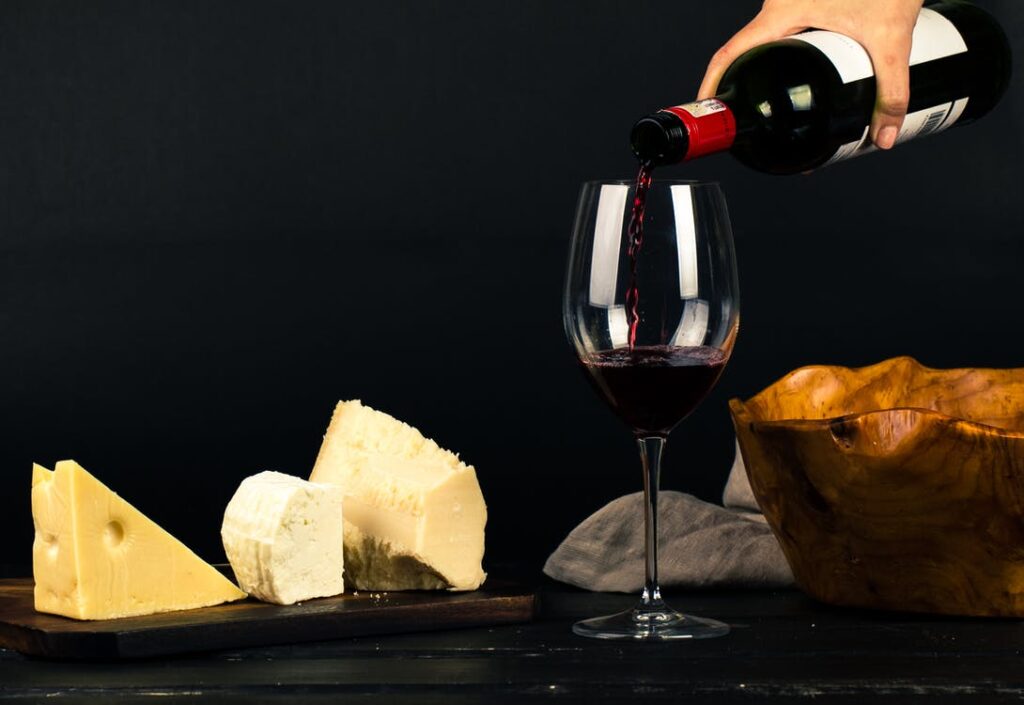The key to enjoying a glass of fine wine with meals lies in the right food and wine pairing. A delightful pairing can elevate both the dish and the drink. While it can seem like a well-honed art, there is a science at work behind such pairings, which strives to create a balance between the tastes and components of a dish and the accompanying wine.
Food and wine pairings can be complex to master, but the basics are simple enough. There are some rules of thumb and simple methodologies that can get you started. As you get more experienced, the confidence you gain will allow you to experiment more and discover new or different pairings outside traditional ones.
Identify the basic flavours in the food
Begin by identifying the basic tastes in your dish. These can range from basic flavours like sweet, salty or sour to complex ones like spicy or umami. However, for the purpose of picking a wine, you can focus only on the six basic tastes – salt, sweet, acid, bitter, fat, and spice.
Wines can be grouped according to the tastes of acidity, bitterness, and sweetness. Be mindful of the varying degrees of these tastes. For example, red wines tend to be on the bitter side while whites and rosés tend to be more acidic.
Identify the few dominant tastes in the dish and assess their intensity. For example, lasagne offers fat and salt flavours. A green salad can be acidic and slightly bitter. The intensity of these flavours can vary and may not directly correlate to the lightness or the richness of the dish itself. The salad may seem lighter, but the dressing can be intense in flavours, such as a balsamic vinaigrette will be highly acidic.
Consider the two types of wine pairings
Once you have identified the primary tastes of the dish, you can try out pairing options. There are two main types of food and wine pairings. A contrasting or complementary pairing plays on the contrast of tastes and flavours between food and wine, where the contrasting components complement each other if paired right. Usually, a white, rosé or sparkling wine will create this kind of a pairing. On the flip side, a congruent pairing strikes a balance between the shared tastes or flavour components that are common to both the dish and the drink. More often than not, red wines tend to create congruent pairings.
A highly acidic wine like a Pinot Grigio or a Sauvignon Blanc will balance out the fat in a creamy lasagne and create a complementary pairing. The creaminess of the dish can also be amplified to a fine degree through a congruent pairing with an Italian Barbera.
You should consider the strength of a wine when pairing it with food so that it doesn’t overtake the flavours of the dish. In fact, the wine should have a similar intensity of flavour as the food. A Sauv Blanc, for example, is light-bodied but quite acidic. A Chardonnay is heavier-bodied but not so acidic. A Cab Sauv is full-bodied and high on tannins. A Pinot Noir is lighter in body among red wines and relatively low on tannins, and therefore, less bitter.
Learn some easy pairing tips and experiment
There are several other quick and easy tips you can keep in mind when pairing wine with food:-
- Hearty red wines pair well with bold-flavoured dishes like red meat and game birds.
- White wines pair well with lighter dishes like seafood or chicken or salads.
- Wines that are high on tannins (on the bitter side) are balanced best with fatty dishes.
- Wines that are high on acidity can be paired well with starchy dishes like potatoes, rice, and pasta.
- Acidic foods like cheeses can be paired with acidic wines with great finesse.
- The wine should be matched with the sauce rather than the meat.
- Rich dishes, such as lasagne, can either be paired with a contrasting acidic wine that will act as a palate cleanser or with a rich and creamy wine to complement the fat flavours.
- Pair fruity, sweet wines with spicy or piquant dishes.
- Pair sweet wines or dessert wines with – you guessed it – sweet desserts.
- For a wide variety of foods or flavours, go with an assortment of food-friendly fine wines like unoaked Chardonnay, dry rosé, sparkling wine, pinot noir, merlot, grenache, and dry Riesling.
Although traditional food and wine pairings may never go out of fashion, experts agree that pairings should be adjusted for personal taste. Feel free to experiment with flavours, or try out some of our favourites for inspiration – Shepherd’s Pie with Sangiovese, Thai food with Pinot Gris, strawberries with White Zinfandel.







